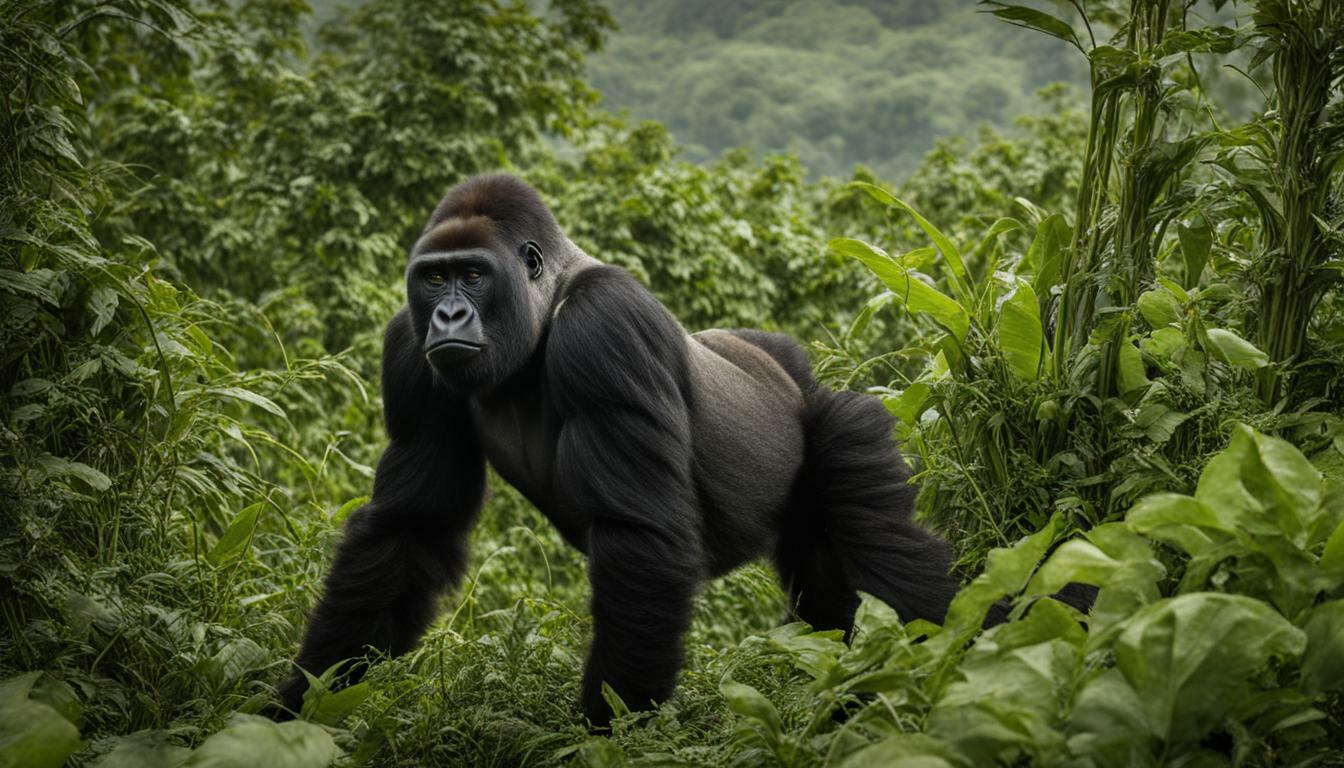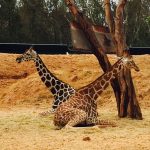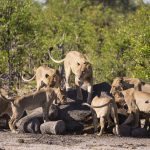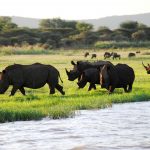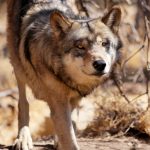The decline in gorilla populations has become a pressing concern, threatening the very existence of these majestic animals. Recent studies have revealed alarming trends in the decline of Grauer’s gorillas, leading to reduced genetic diversity, increased inbreeding, and a higher frequency of harmful mutations compared to a century ago. The primary factors behind this decline can be attributed to human activities, such as hunting and the illegal capture of gorillas for bushmeat.
Key Takeaways:
- Gorilla populations are experiencing a significant decline, posing a threat to their survival.
- Human activities, including hunting and the illegal capture of gorillas, are the main causes of this decline.
- The decline has resulted in reduced genetic diversity, increased inbreeding, and a higher occurrence of harmful mutations.
- Conservation efforts have shown success in revitalizing the mountain gorilla population, offering hope for Grauer’s gorillas.
- Understanding the consequences of human activities on gorilla populations requires temporal comparisons and historical samples.
It is clear that urgent action is needed to address the crisis facing gorilla populations. By raising awareness and supporting conservation efforts, we can work towards reversing the decline and ensuring a future for these incredible creatures.
Causes of Gorilla Population Decline
Human activities, including hunting and the illegal capture of gorillas for bushmeat, have been identified as the primary causes behind the decline in gorilla populations. These activities have had severe consequences for the gorillas, resulting in reduced genetic diversity, increased inbreeding, and a higher frequency of harmful mutations compared to a century ago.
In recent years, the demand for bushmeat, particularly in certain regions, has led to a significant increase in hunting of gorillas. Gorillas are often targeted for their meat, which is considered a delicacy in some cultures. This relentless hunting has decimated gorilla populations, leaving them vulnerable to extinction.
The illegal capture of gorillas for the wildlife trade has also contributed to the decline. Gorillas, especially young ones, are captured and sold as pets or used in entertainment venues. This not only disrupts the natural social structure of gorilla groups but also leads to the loss of valuable genetic diversity, as captive gorillas are often bred within a limited gene pool.
The consequences of these activities are dire. Gorilla populations now face increased inbreeding, which can result in decreased fertility, weakened immune systems, and reduced overall fitness. The occurrence of harmful mutations has also risen, further threatening the survival of these magnificent creatures.
Quote:
“The recent decline in gorilla populations is a direct result of human actions. The hunting and illegal capture of gorillas for bushmeat has devastated their numbers and led to harmful genetic consequences. Urgent conservation efforts are needed to reverse this alarming trend and protect these iconic primates for future generations.” – Jane Goodall, Primatologist
Summary:
- Human activities, including hunting and illegal capture, are the main causes of gorilla population decline.
- Gorillas are hunted for bushmeat and captured for the wildlife trade, leading to reduced genetic diversity and increased inbreeding.
- The decline in population has resulted in more harmful mutations and threatens the survival of gorilla populations.
- Conservation efforts are vital to reversing the decline and ensuring the long-term survival of these magnificent creatures.
| Human Activities | Consequences for Gorillas |
|---|---|
| Hunting | Decimation of populations, loss of genetic diversity |
| Illegal Capture | Disruption of social structure, inbreeding, increased harmful mutations |
Impacts of Gorilla Population Decline
The decline in gorilla populations has had severe impacts, leading to reduced genetic diversity, increased inbreeding, and a higher frequency of harmful mutations. The recent decline in the population of Grauer’s gorillas has resulted in a significant loss of genetic diversity compared to 100 years ago. With fewer individuals in the population, there are limited opportunities for genetic recombination, which is essential for the survival and adaptation of species.
In addition to reduced genetic diversity, the decline in population has also led to increased inbreeding among gorillas. As the population becomes smaller and more isolated, individuals are more likely to mate with close relatives. This inbreeding can result in negative effects such as reduced fertility, shorter lifespans, and increased susceptibility to diseases and other health issues.
Furthermore, the decline in gorilla populations has led to a higher frequency of harmful mutations. With limited genetic variation and increased inbreeding, the chances of harmful mutations occurring and being passed on to offspring are greater. These mutations can have detrimental effects on the health and survival of gorillas, impacting their ability to adapt to changing environments and threats.
It is crucial to address the impacts of gorilla population decline in order to ensure the survival and long-term viability of these magnificent creatures. Efforts must be made to protect their habitats, reduce hunting and illegal capture, and promote conservation initiatives that aim to restore and increase gorilla populations. By taking action and prioritizing the preservation of these animals, we can mitigate the negative impacts of population decline and work towards a healthier and more sustainable future for gorillas.
| Impacts of Gorilla Population Decline |
|---|
| Reduced genetic diversity |
| Increased inbreeding |
| Higher frequency of harmful mutations |
Conservation Efforts for Gorilla Population Decline
Recognizing the urgency of the situation, dedicated conservationists have been working tirelessly to implement strategies aimed at saving gorilla populations. These efforts have been focused on various aspects, including habitat conservation, anti-poaching measures, community involvement, and research and monitoring.
One of the key strategies in gorilla conservation is protecting their habitats. This involves creating and maintaining protected areas, national parks, and reserves where gorillas can thrive without the threat of habitat destruction. By safeguarding their natural habitats, conservationists are ensuring the long-term survival of gorilla populations.
To combat the illegal capture and hunting of gorillas for bushmeat, anti-poaching measures have been put in place. This includes increasing patrols in vulnerable areas, strengthening law enforcement, and empowering local communities to actively participate in gorilla protection. By targeting the illegal wildlife trade, conservationists are reducing the threat posed to gorilla populations.
Another crucial aspect of conservation efforts is community involvement. Conservation organizations work closely with local communities to raise awareness about the importance of gorilla conservation and to provide alternative livelihood options. By engaging communities and empowering them to become guardians of the gorillas, conservationists are fostering a sense of ownership and responsibility towards these majestic creatures.
| Gorilla Conservation Strategies | Details |
|---|---|
| Habitat Conservation | Creating and maintaining protected areas, national parks, and reserves. |
| Anti-Poaching Measures | Increasing patrols, strengthening law enforcement, and targeting the illegal wildlife trade. |
| Community Involvement | Raising awareness, providing alternative livelihood options, and empowering local communities. |
| Research and Monitoring | Studying gorilla behavior, population dynamics, and genetic diversity for effective conservation. |
Research and monitoring are also integral components of gorilla conservation. By studying gorilla behavior, population dynamics, and genetic diversity, conservationists gain valuable insights for effective conservation strategies. This scientific approach helps in identifying critical areas of intervention and in understanding the impact of conservation efforts over time.
In conclusion, the decline in gorilla populations has prompted dedicated conservationists to take action. Through a combination of habitat conservation, anti-poaching measures, community involvement, and research and monitoring, efforts are being made to save gorilla populations from further decline. However, continued support and active participation from individuals and governments are crucial for the long-term survival of these incredible creatures.
Protecting Gorilla Habitats to Prevent Extinction
Ensuring the preservation of gorilla habitats is vital in preventing their further decline and ultimately avoiding the risk of extinction. The recent decline in the population of Grauer’s gorillas has led to reduced genetic diversity, increased inbreeding, and more harmful mutations compared to 100 years ago. This decline is mainly due to human activities, such as hunting and the illegal capture of gorillas for bushmeat. The loss of genetic diversity, increased inbreeding, and higher frequency of harmful mutations have had severe consequences for the gorillas, particularly in genes related to immunity and reproduction.
To combat this crisis, conservation efforts have played a crucial role in helping the mountain gorilla population recover and grow. These efforts provide hope that similar strategies could have a positive effect on Grauer’s gorillas, preventing their further decline. By protecting their natural habitats, we can create safe havens for these majestic creatures, allowing them to thrive and ensuring their long-term survival.
It is our responsibility to take action now and preserve the habitats that are crucial to the survival of gorilla populations. As renowned primatologist Dr. Jane Goodall said, “Only if we understand can we care. Only if we care will we help. Only if we help shall they be saved.” Let us come together to protect these magnificent animals and the habitats they depend on.
Preserving gorilla habitats requires a multi-faceted approach, including measures such as establishing protected areas, implementing stricter regulations against hunting and illegal capture, and promoting sustainable tourism practices that benefit local communities. Additionally, supporting local initiatives and organizations working on the ground is essential for the effective implementation of conservation strategies.
Table: Conservation Strategies for Protecting Gorilla Habitats
| Conservation Strategy | Description |
|---|---|
| Establishment of Protected Areas | Creating designated zones where gorillas and their habitats are safeguarded from human encroachment and exploitation. |
| Regulation and Enforcement | Implementing strict laws and regulations against hunting, illegal capture, and habitat destruction, and ensuring their effective enforcement. |
| Promoting Sustainable Tourism | Encouraging responsible tourism practices that minimize negative impacts on gorilla habitats and provide economic benefits to local communities. |
| Community Engagement | Involving local communities in conservation efforts, empowering them to value and protect gorilla habitats as key natural resources. |
| Research and Monitoring | Conducting scientific research and continuous monitoring to understand gorilla behavior, population dynamics, and threats to their habitats. |
By implementing these strategies and rallying support from governments, organizations, and individuals, we can make a significant difference in protecting gorilla habitats and preventing their extinction. Together, let us ensure a future where these incredible creatures continue to roam our planet, enriching our natural world for generations to come.
Conclusion
The alarming decline in gorilla populations necessitates immediate action to reverse the trend and ensure the continued existence of these incredible creatures. The recent decline in the population of Grauer’s gorillas has led to reduced genetic diversity, increased inbreeding, and more harmful mutations compared to 100 years ago. This decline is mainly due to human activities, such as hunting and illegal capture of gorillas for bushmeat. The decline in population has had severe consequences for the gorillas, with loss of genetic diversity, increased inbreeding, and a higher frequency of harmful mutations. This has directly affected the population’s survival, particularly in genes related to immunity and reproduction.
However, there is hope. Conservation efforts have helped the mountain gorilla population recover and grow, indicating that similar efforts could have a positive effect on Grauer’s gorillas. By implementing strategies focused on protecting gorilla habitats and reducing human interference, we can give these majestic creatures a chance to thrive again. It is crucial to collaborate with local communities, governments, and wildlife organizations to develop and implement sustainable conservation practices. Protecting their habitats and ensuring their safety is the key to increasing gorilla populations and reversing the alarming decline.
The study also emphasizes the importance of temporal comparisons and historical samples in understanding the consequences of human activities on gorilla populations. By examining past data, we can gain valuable insights into how gorilla populations have changed over time and the specific threats they face today. This knowledge enables us to make informed decisions and implement targeted conservation efforts.
Together, we have the power to make a difference. Every individual can contribute by supporting organizations dedicated to gorilla conservation, spreading awareness about the challenges they face, and advocating for sustainable practices that protect these amazing creatures and their habitats. It is only through collective action and a shared commitment to their survival that we can ensure a future where gorillas can thrive, their populations increase, and their existence is secured for generations to come.
FAQ
Q: What is causing the decline in the population of Grauer’s gorillas?
A: The decline in the population of Grauer’s gorillas is mainly due to human activities, such as hunting and the illegal capture of gorillas for bushmeat.
Q: What are the consequences of the decline in gorilla populations?
A: The decline in gorilla populations has led to reduced genetic diversity, increased inbreeding, and a higher frequency of harmful mutations, particularly in genes related to immunity and reproduction.
Q: Have conservation efforts helped gorilla populations recover?
A: Yes, conservation efforts have been successful in helping the mountain gorilla population recover and grow, indicating that similar efforts could have a positive effect on Grauer’s gorillas.
Q: What is the importance of temporal comparisons and historical samples in understanding the impact of human activities on gorilla populations?
A: Temporal comparisons and historical samples are crucial in understanding the consequences of human activities on gorilla populations, as they provide a baseline for assessing changes in genetic diversity and the occurrence of harmful mutations over time.
Q: How can we protect gorilla habitats to prevent further decline and potential extinction?
A: Protecting gorilla habitats is crucial in preventing further decline and potential extinction of gorilla populations. This can be achieved through initiatives such as habitat conservation, anti-poaching measures, and sustainable tourism practices.

